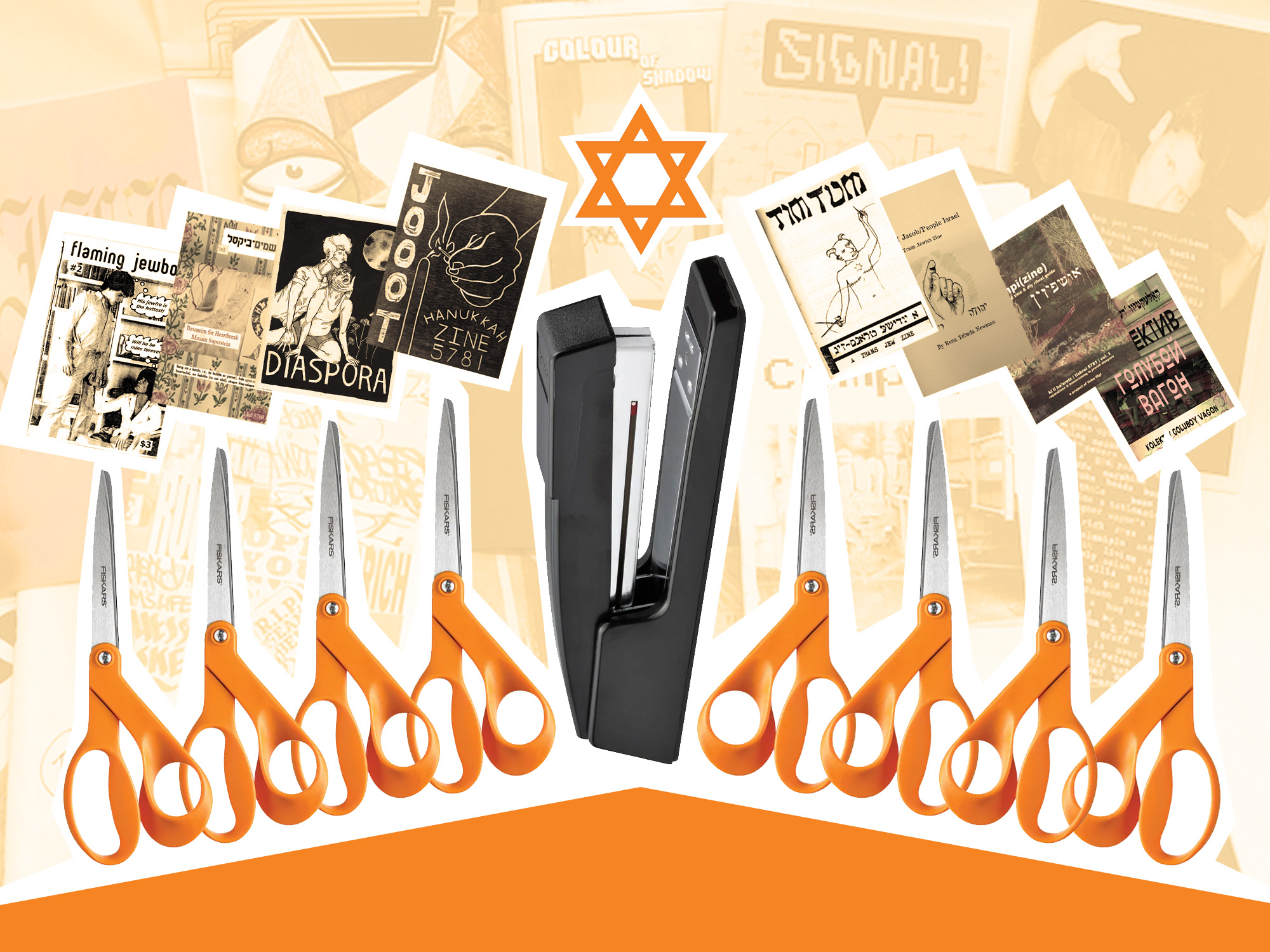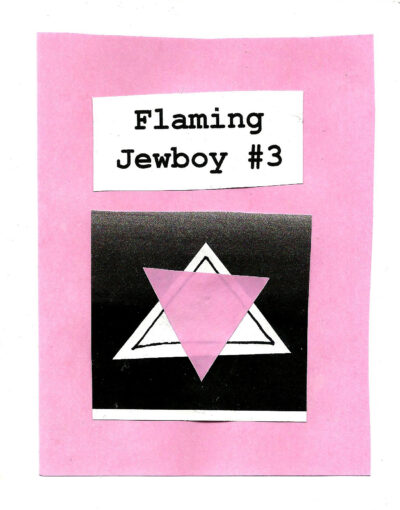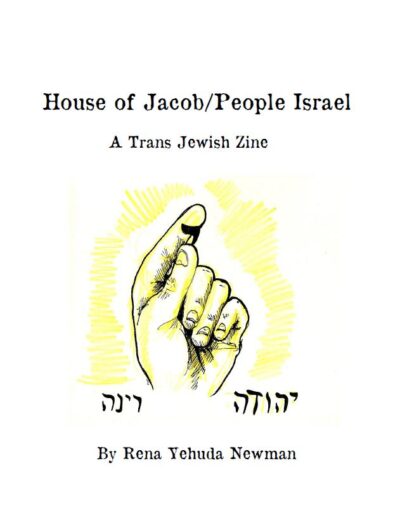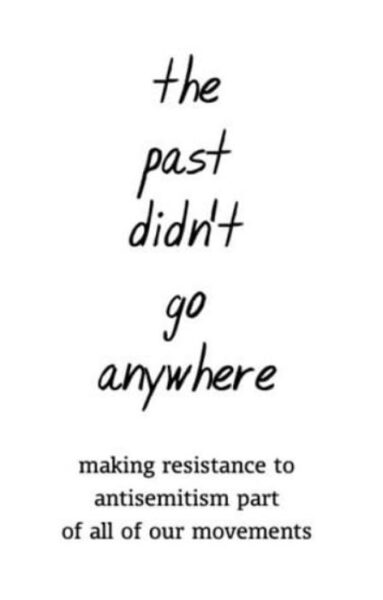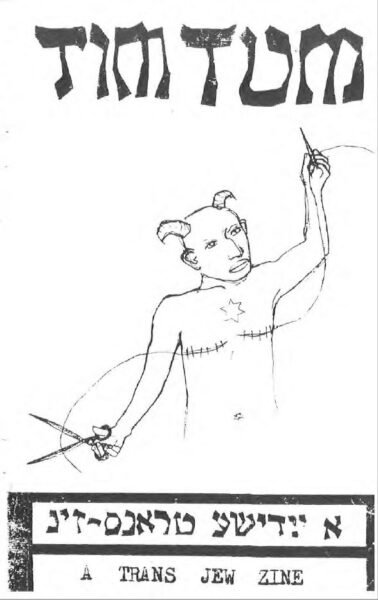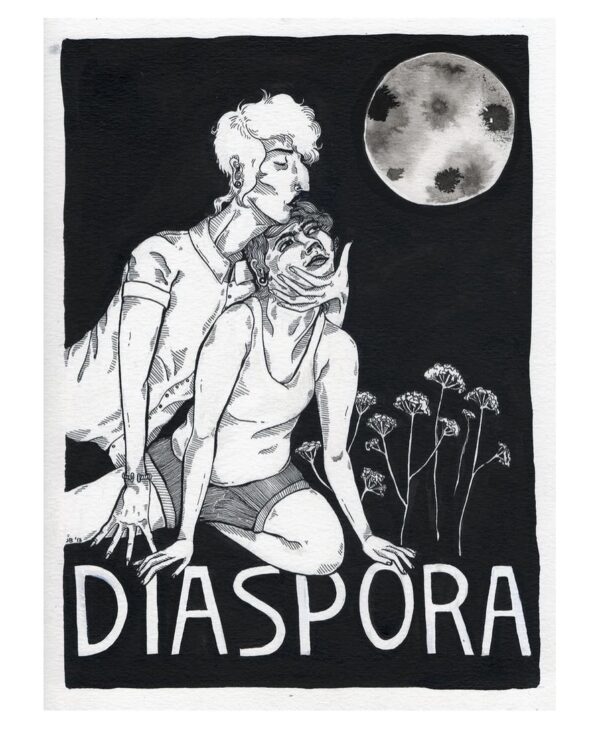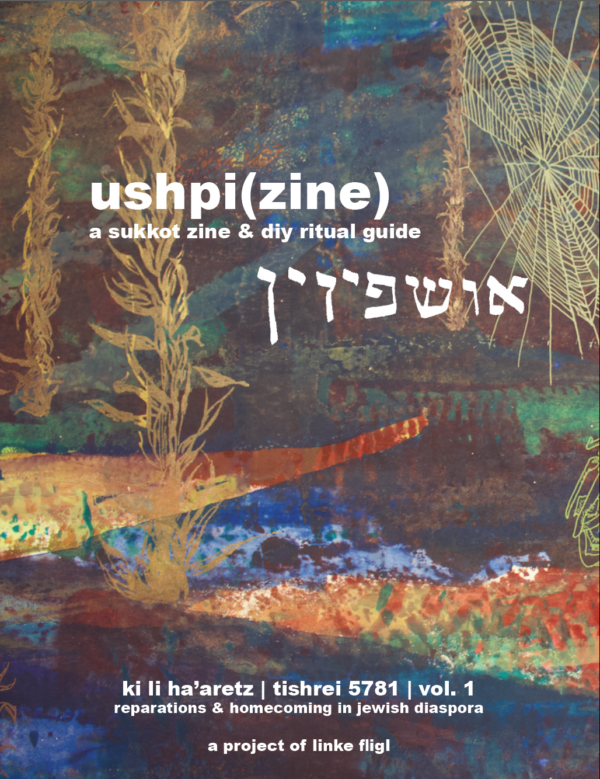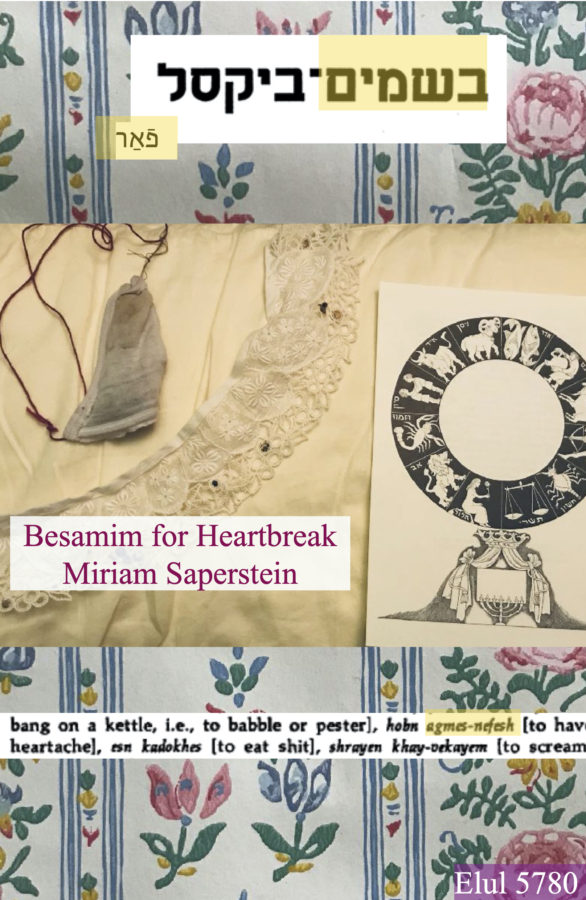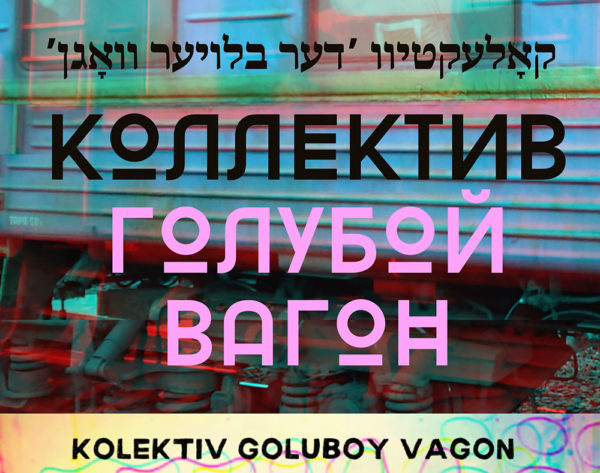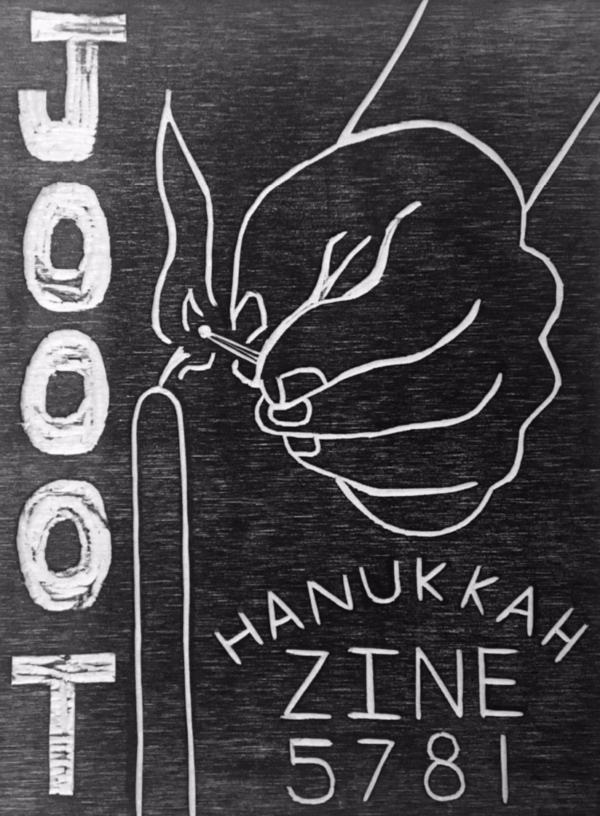As we dust off our menorahs and rush to find a box with the appropriate number of unbroken candles, New Voices Magazine has a different kind of light to bring to each night of Hanukkah: Jewish zines. As a long-time collector of zines of many stripes, our Editor is excited to spotlight a series of their favorite independently published zines throughout the holiday. This page will be updated each day of Hanukkah with another zine feature, to increase the indie-publishing light alongside the growing glow of our channukiah. Read the features and learn more about Jewish zines below!
Eight Nights of Jewish Zines
Night #8: The Editor’s zines, “House of Jacob // People Israel” and “Flaming Jewboy #3”. Read this essay written by our Editor about the Torah of Zines and how these two Jewish zines are a tribute to the l’dor v’dor of independent publications.
Night #7: “The Past Didn’t Go Anywhere: Making Resistance to Antisemitism Part of All of Our Movements” by April Rosenblum. Download a digital copy of the zine here and read this essay about the zine’s enduring impacts.
Night #6: A Love Letter to “TimTum: A Trans Jew Zine”. Read the letter here.
Night #5: The Doykeit Zine Series by JB Brager. Read our interview with the zine series’ editor here.
Night #4: “Ushpi(zine)” by Linke Fligl. Read a statement on this sukkot-themed, diaspora zine here.
Night #3: “Besamim for Heartbreak” by Miriam Saperstein. Read their reflections on the zinemaking process here.
Night #2: Kolektiv Goluboy Vagon Zine. Read our conversation with the zinesters, “Post Soviet Jews & a Radical Future”
Night #1: The Judaism On Our Own Terms (JOOOT) Hanukkah 5781 Zine. Click here to read our interview with its creators!
The Jewish Zine Scene
What’s a zine? A zine is an often-handmade, independently published booklet about anything personal, political, or beyond. Derived from “magazine”, zines are their own genre of creation, often xeroxed, cut, pasted, printed, and stapled by their author — or authors. The free spirit of zines dates back to the early days of pamphleteering (think Thomas Paine’s “Common Sense”), but the term “zine” was coined around the 1970s and ‘80s in the punk scene. Mainstream music media wouldn’t write about the budding genre, so punks made their own. Since then, zines have flourished, containing every kind of content imaginable.
Jews have been engaged in independent publishing projects for millennia, from rabbinic commentaries to community-specific siddurim, Yiddish pamphlets to Ladino newspapers, small publishing houses, Chabad mini-brochures, and cultural touchstones like the Jewish Catalogue (arguably the first archived Jewish zine). The People of the Book could just as easily be called the People of the Zine. Theologically speaking, even our Creator is a self-published author. It’s a family business.
At New Voices, we feel particularly strongly that zines are extremely Jewish. Decentralized, powerful, textual, irreverent, and often deeply personal, the radical soul of zines echoes Jewish practice. Jewish zines have become a place for the most intimate intersections of our Jewish selves to find form through text and image; the medium facilitates the meaning. Jewish zinemakers today are creating a Torah of zines.
Often, the revelation of Torah is likened to light: black fire on white fire. In a world of modern Judaisms, with fiery young Jews building a DIY-Jewish practice and taking ritual into their own hands, the independent and revolutionary history of zines unites with the passionate flame of Hanukkah — a radical story of resistance, reclamation, and Jewish pride.
The etymology of the word “radical” is derived from the Latin word “radix”, roots. Jewish zines sculpt a Judaism that is both radical and rooted — as well as underground. The Jewish zine scene has long been unseen by the broader Jewish community, revealed only to certain Jews who know the signs and symbols, who keep their ears to the ground. Often, Jewish zinemakers and readers are queer, transgender, or hold other marginalized identities; the hiddenness of zines has often made them a haven for those at the edges of our camp. Many Jewish zines have been buried in the rush of history because of their subterranean, unannounced nature. But this holiday, New Voices Magazine will be unearthing Jewish zines old and new, bringing them into the winter light and celebrating their brilliance by featuring a different one on each night of Hanukka.
Throughout the holiday, if you follow us on social media or by checking back at this article each night, you’ll hear about eight different Jewish zines through interviews, statements by their authors, and personal testimonies from our Editor about what these zines have meant to them. So warm your hands by the light of these zines and stay awhile — there’s so much to read!
